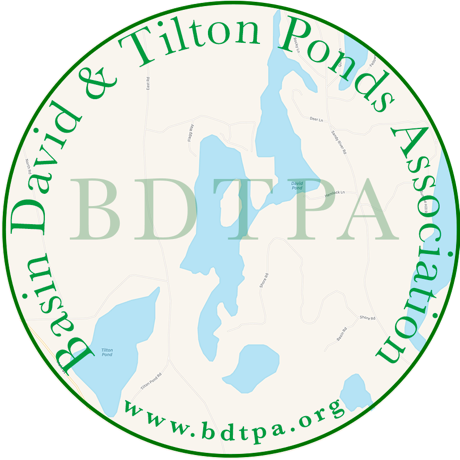PLANNING FOR 2024 INVASIVE PLANT SURVEYS

Please read this message from Bob Capers, who is a trained botanist and worked for a number of years on invasive aquatic plants in Connecticut,
Planning for the 2024 invasive plant surveys has begun, and we could use some help.
I was asked to coordinate the surveys for invasive plants early last year and was in touch with several of the people who had previously conducted surveys in Basin, David, and Tilton Ponds. However, I never was able to find enough people to survey all of David Pond. And the need to survey thoroughly in all three ponds will be greater now that we know there’s an invasive plant in Tilton.
With the help of the 30 Mile River Watershed Association and staff from the Maine Department of Environmental Protection, Tilton Pond was thoroughly surveyed after the invasive Swollen Bladderwort was found there in early August. It appears from several surveys arranged with the help of the 30 Mile crew that the plant is already abundant, indicating that it didn’t just arrive and may, in fact, have been there for years.
Because of concerns that this floating plant might have been carried downstream into David Pond, I surveyed the south end of David, where the stream from Tilton Pond enters, along with 30 Mile’s Lidie Robbins, executive director, and Silas Mohlar, program leader. We found no evidence of the invasive Swollen Bladderwort there.
I also know that several residents did surveys, looking for the Swollen Bladderwort in David Pond, but found none, which was reassuring. Thanks very much to those who responded to the urgent appeals for trained surveyors to look for the invasive - Deb Cayer, Steve Smith-Erb, Sarah Lafond and Joe Longtin (and apologies to anyone who searched but didn’t get added to my list). Thanks, too, to Lori Beaulieu, who helped on several days when we were collecting the invasive bladderwort in Tilton Pond.
The folks from 30 Mile were in touch with the DEP to discuss the situation during the fall, and I attended an online meeting in November with the 30 Mile crew and with Brett Willard of the Lake Stewards of Maine (LSM). The thinking at this point is to monitor the situation in Tilton, doing thorough surveys to get a better idea of how abundant it is and whether its abundance is increasing, and to prevent it from spreading to other water bodies.
Tilton Pond has several native bladderworts, at least one of which is also very abundant. It would be difficult to remove the invasive bladderwort without doing serious damage to the native plant populations. And at this point, we don’t know if the Swollen Bladderwort will become a problem there.
However, there is serious concern that the plant, which floats freely, is not rooted in the bottom and can reproduce by producing fragments, might find its way downstream, establishing new populations in David Pond, Parker Pond and lakes farther downstream such as Echo Lake, Lovejoy Pond and Androscoggin Lake. So we will need to do thorough surveys on David Pond next year to find any plants before they can get established.
To do this, we will need to find new volunteers who can be trained in the survey protocol during the late spring and early summer. Working with 30 Mile and LSM, we also will be arranging a refresher course in aquatic plant identification for people who want to help but have been away from the surveys for a few years.
We also will offer special training in identification of the bladderworts so people will be able to recognize the new invasive species if they see it. We have a number of native bladderworts, but there previously were no invasive species. Previously, if we saw a bladderwort in a lake, we didn’t need to worry about which species it was – they were all native. Now that’s no longer the case, so surveyors will need to know how to tell them apart. We’ll arrange a training session to help with that.
I have been in touch with officials at LSM and the 30-Mile River Watershed Association and we will be scheduling training sessions soon. We also are coordinating with officials at the Friends of Cobbossee Watershed, who are dealing with several invasive aquatic plants already and want to hold additional training sessions in this part of the state. As soon as training sessions are scheduled, I will post the schedule on this website or will provide a link to the website where you can find more information and can sign up.
Meanwhile, I would love to hear from anyone who is interested in joining us this year in doing surveys on David, Tilton, or Basin Pond. Please send me an email at rscapers@mindspring.com and let me know what pond you’re interested in and whether you have already received the invasive plant survey training offered by LSM.
I’m a trained botanist and worked for a number of years on invasive aquatic plants in Connecticut, but I’m retired now, living in Fayette, though not on one of your ponds. Still, I know aquatic plants, love to get out in a canoe and am happy to help anyone interested in protecting our lakes, big or small. I hope to hear from you.
Bob Capers
Download a PDF of this message here.